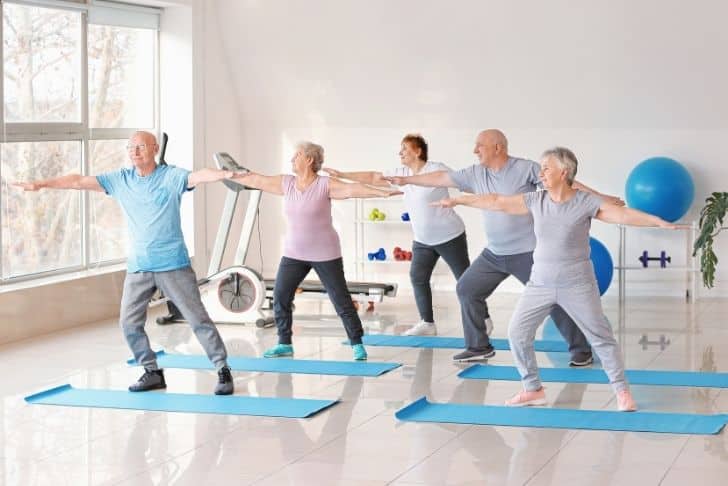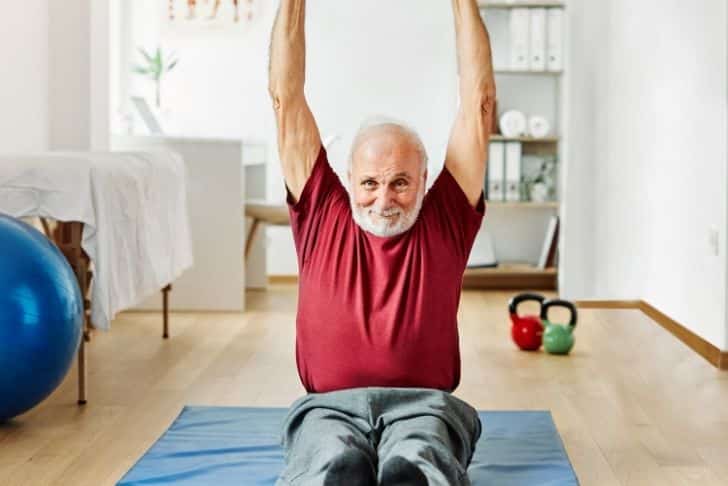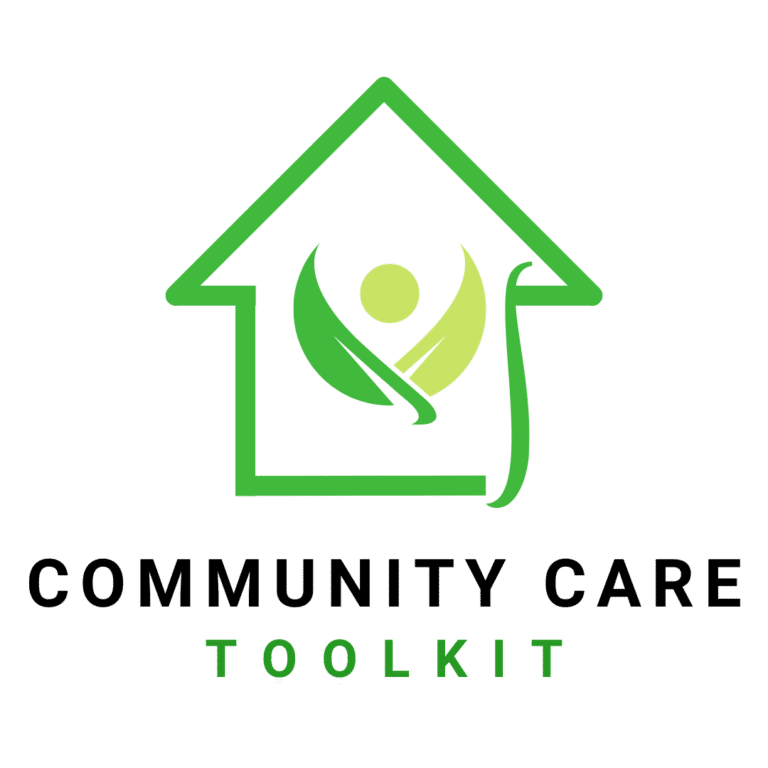Get ready to put a fresh spin on your fitness routine with “The Ultimate Guide to core exercises for older adults.” This insightful article offers a host of scientifically-backed ways to strengthen your core, particularly focusing on exercises that are ideal for older adults. Learn about why core exercises are vital, especially as we age, and discover workouts that target multiple core muscle groups simultaneously for maximum effectiveness. The physical therapist with Harvard-affiliated Brigham and Women’s Hospital, Marty Boehm, offers three recommended exercises, all with step-by-step instruction. Treat this guide as your secret weapon to enhance not just your strength, but also your balance and stability.

Understanding the Importance of Core Exercises for Older Adults
As we age, it’s essential to keep our bodies strong and healthy, and that extends to our core muscles as well. These muscles, which are central to your body, play a crucial role in maintaining your balance, mobility, and overall strength, making them particularly important for older adults.
How core exercises contribute to overall health in seniors
Core exercises have multiple health benefits for seniors. Not only do they enhance your core strength, which is essential for stability and balance, they can also alleviate back pain and improve your posture. Moreover, they can boost your overall physical performance and endurance, making daily tasks easier to perform.
The relationship between core strength and balance
Core strength and balance go hand in hand. Strong core muscles contribute to better stability and balance, reducing the risk of falls and injuries. In other words, by making sure your core muscles are strong, you’re doing a big favor to your balance skills.
The concept of core stability
core stability refers to the ability to control your body’s position and motion. By focusing on core exercises, you’re enhancing your core stability which means you’re improving your ability to perform movements with precision and control, a key factor in maintaining safety and physical wellbeing as we age.
The Anatomy of the Core
Now that you know why core exercises are so important, let’s delve deeper into what constitutes the core.
What constitutes the core muscles
While many people associate core muscles only with the abdominals, they actually consist of a far larger group of muscles in the body. They range from the lower rib cage to the buttocks. They include the long rectus abdominis muscles in the front; the external and internal obliques on the sides; a wide, flat girdle in front called the transversus abdominis, and more.
The job of different core muscles
Different core muscles are responsible for different functions, but they work in harmony to support your body’s movement and stability. For example, the muscles in your back help you stand up straight, while those in your pelvis help you lift your legs and maintain balance while standing.
How core muscles support daily activities
Your core muscles play a huge role in daily activities. They’re involved in standing, getting out of a chair, bending, and lifting. Moreover, they help maintain your balance, crucial for Preventing falls and injuries.
Problems with Traditional Core Exercises
While it’s clear that core exercises are imperative, not all exercises are suitable for seniors. So, while talking about the importance of the core, it’s essential to highlight some problems with traditional core exercises.
Shortcomings of sit-ups and crunches
Sit-ups and crunches, once go-to moves for core strengthening, are not as effective as previously thought. These exercises, far from working out your entire core, tend to focus only on a few muscles while posing risks for older adults.
Potential risks these exercises pose to older adults
Sit-ups and crunches can be dangerous, particularly for older adults, because they involve pulling on your neck. Moreover, they focus on the hip flexor muscles which might lead to back pain if over-strengthened.
Other ineffective or risky core exercises
Other risky or ineffective core exercises for older adults can include ones that place undue stress on the back, such as certain kinds of leg lifts or twists. Hence, it’s always important to select core exercises suited to your age and capability.
Effective Core Exercises for Older Adults
There are safe and effective core exercises that seniors can benefit from, which are not only efficient but also kinder to their bodies.
Introduction to safe and effective core exercises for seniors
The exercises that are considered best for seniors are the ones that entail the simultaneous engagement of multiple muscle groups, just like you would do in real-life activities, such as lifting or climbing.
The benefits of working multiple muscle groups simultaneously
The best part about these exercises is that they imitate actual movements and activities, as opposed to isolating a single muscle group. This way, they help create a balance of strength throughout the body, thus improving overall stability and flexibility.

Detailed Instructions for Core Exercises
Let’s look specifically into three popular and effective core exercises for older adults: bridge exercise, planks, and the opposite arm and leg raise.
How to correctly perform the bridge exercise
Lie on your back with your knees bent and feet flat on the floor, hip-width apart. Place your arms by your sides. Tighten your buttocks and lift your hips off the floor until they form a straight line with your hips and shoulders. Hold this position and then return to the starting position. Repeat this 10 times.
Tips for doing planks safely
To do the plank exercise, start on your hands and knees. Then lower your upper body onto your forearms, aligning your shoulders directly over your elbows. Keep your back straight and maintain this plank-like position as long as possible, and then return to the starting position. Remember, the key is to stay as rigid as possible.
Instructions for proper opposite arm and leg raise execution
For the opposite arm and leg raise exercise, kneel on all fours and extend your left leg off the floor behind you while reaching out in front of you with your right arm. Try to keep your hip and shoulder squared and bring your arm and leg parallel to the floor. Hold this position, return to the initial kneeling posture, and then repeat the exercise with your right leg and left arm. Repeat this exercise for both sides 10 times.
How to Begin a Core Workout Routine
Starting a new workout routine, much like any other new habit, involves patience, commitment, and understanding your body’s capabilities.
Starting slowly and gradually increasing intensity
If you’ve not worked your core in a long time, start slowly and focus on the quality of each exercise. Gradually, increase the repetitions for each exercise, building up endurance and strength over time.
The value of prioritizing quality over quantity
When building core strength, the quality of the exercise should be prioritized over the quantity. Better to do a few reps of an exercise correctly than many reps with incorrect form. This way, you can reap the full benefits of the exercise without risking an injury.
Recommendations for daily core strengthening
Unlike some muscle groups that need rest days, core muscles can be strengthened daily, making it easier to integrate core exercises into your daily routine.

Warm-ups and Cooldowns
Every workout should always start with a warm-up and end with a cool-down. This process helps prevent injuries and boosts your workout effectiveness.
Why warming up and stretching before exercising is vital
Warming up your muscles before a workout increases your muscle temperature, flexibility, and efficiency, which will enhance your workout performance. You could simply march in place for a few minutes and move your arms around, to get your blood flowing.
Demonstrating simple warm-up exercises
Simple warm-up exercises, such as light jogging, jumping jacks, or toe touching, can get your heart rate up and your muscles ready for a workout. Remember, the goal is not to exhaust yourself but to kick start your body for the upcoming exercises.
Cool down exercises and stretching post-workout
After your workout, don’t forget to cool down. Stretch your muscles and let your heart rate slow down gradually. Stretching not only helps in muscle recovery but also improves flexibility.
Maintaining Balance between Core Tightness and Surrounding Flexibility
A strong core is one that’s balanced: it should be tight, yet surrounded by flexible muscles.
The importance of balancing core tightness with flexibility
While a strong core provides stability, the muscles around it need to be flexible to allow for an efficient range of motion. Balancing core tightness with flexibility, far from contradicting, actually complement each other in building a stronger and more harmonious body.
Specific stretches for the hip flexors and hamstrings
Remember to regularly stretch and relax your muscles, especially the ones frequently used in core exercises. Hip flexors at the front of your pelvis and the hamstrings in the backs of your thighs are key muscles that need to be kept flexible.
Additional exercises for building flexibility
Incorporating yoga, Pilates, and dynamic stretching into your routine can help improve flexibility. These exercises promote long, lean and flexible muscles, and help counterbalance the strength and tightness of your core.
Common Mistakes to Avoid in Core Exercises
To benefit from core exercises and to avoid injuries, it’s essential that the exercises are done correctly.
Incorrect positions and moves in core workouts
Incorrect positions and moves can do more harm than good. This includes rounding or arching your back excessively during exercises, holding your breath, pulling on your neck, or not engaging your core properly throughout the exercises.
Potential injuries from improper execution
Improper execution can lead to strained muscles, back pain, or more severe injuries. It can also deprive you of the full benefits of the workout, making your efforts less effective.
How to verify and maintain the correct form
To verify and maintain the correct form, consider working with a professional trainer, especially in the initial stages. Once you have a good understanding of the correct form, monitor yourself in a mirror during exercises. Listen to your body and if something feels wrong, it most likely is.
Consulting Health Professionals
It’s never a bad idea to involve health professionals in your fitness journey, especially if you’re older or have health concerns.
When to seek advice from a doctor or therapist
If you’re new to exercise, have any health concerns or experience discomfort during your workouts, consulting a doctor or physical therapist can provide added safety. They can recommend suitable exercises and modifications, based on your individual health and fitness status.
The role of personalized training and guidance
Personalized training can take into consideration your strengths, weaknesses, physical conditions, and personal goals, making your workout safer and more effective. Guidance from a professional can also help you better understand the exercises and ensure you do them correctly.
Monitoring the progress and adjusting the routine accordingly
Regularly reviewing your progress and adjusting your workout routine according to your development is important to stay effective in your workouts. This keeps challenging your body, prevents plateaus, and helps you steadily move towards your fitness goals.
Embarking on a journey of core exercises for seniors is certainly rewarding. By choosing a suitable, well-planned routine that focuses on reinforcing your core, you’re taking a crucial step towards better balance, strength, and overall health. Don’t underestimate the power of your core: embrace it, strengthen it, and feel the difference.
